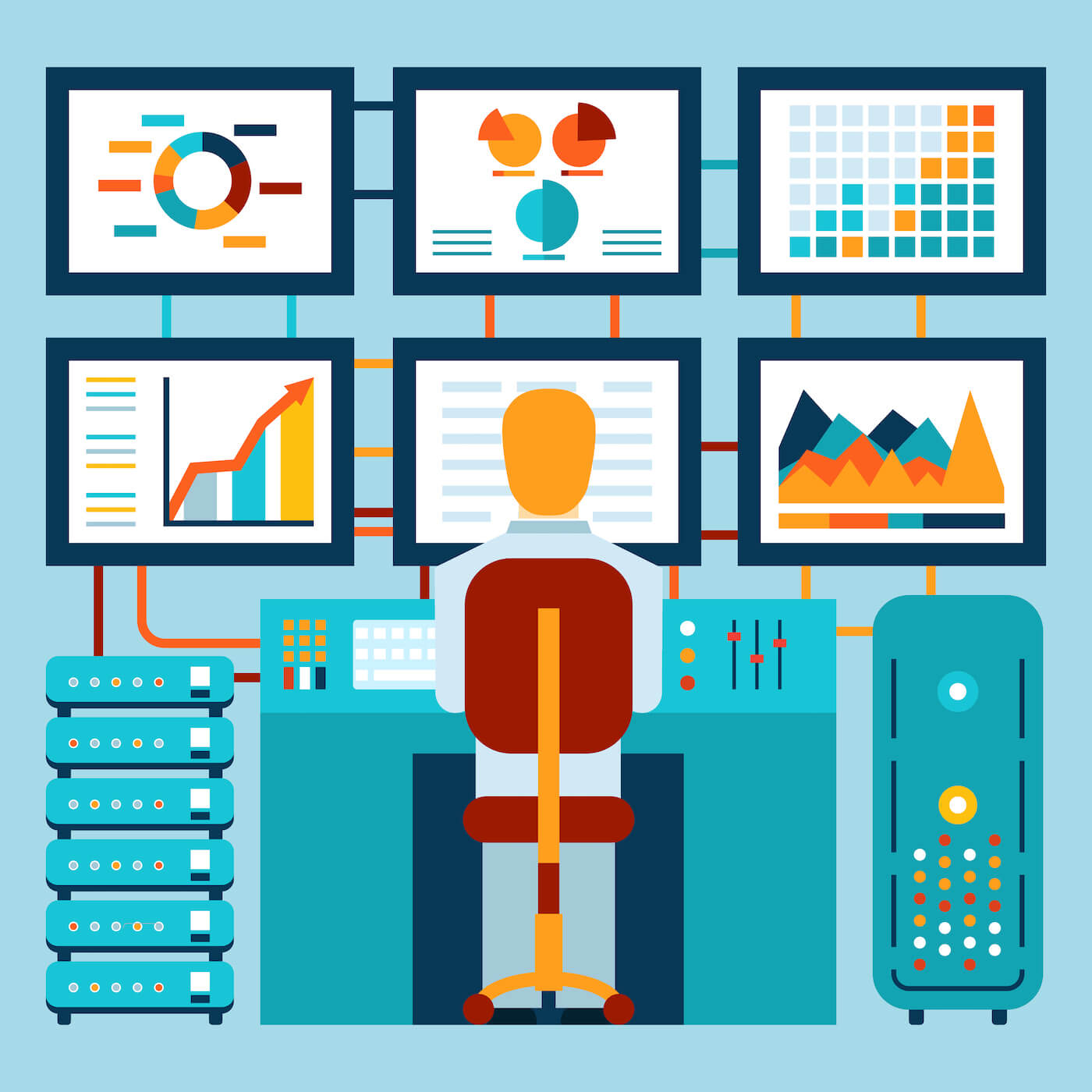Top 6 Best Practices for Modern Workspace Management: Time Tracking is One of Them
We live in a constantly changing digital society, and workplace management tactics adapt to keep up with these changes. For the workplace manager, it’s important to keep in mind best practices in the 2020s and moving forward.
Modern workspace management refers to not only the modern workspace but also simplifying device management for smart workplace operations.
For the best modern workspace management, it’s all about what makes sense for your company, operations, and workforce as a whole.
Key Focuses for Workspace Management

While workspace management may feel like you’re constantly putting out fires, there are at least 4 key focuses they should be dedicated to:
- Time management: Companies spend the majority of their money on time and resources, neither of which you can get back. Employee monitoring is the best way to conduct time management. With employee monitoring software you can identify time allocation for tasks, employee workloads, and employee attendance, among others.
- Task management: Task management is another crucial area for workplace management as it relates to operational efficiency and productivity. With task management software, managers can optimize workflows, time budgets, estimates, deliverables, and expectations.
- Personnel and resource management: Your workers, staff, contractors, third-party partners, and vendors can all fall under personnel and they can take up a lot of your managerial skills to control. Using monitoring software, productivity software, and critical leadership skills will help guide your personnel management. Properly managing your resources is critical to workspace management practices.
- Modern management: As our workplaces expand with more technology and tools to choose from, managers must also learn to use these tools appropriately. Modern management refers to device management and includes a basic understanding of device compatibility, function, and operational use, as well as taking the time to optimize your company’s approach to and use of technology and tools.
Top 6 Best Practices for Modern Workspace Management
Whether you’re a project manager or looking for ways to improve worker productivity, these best practices are for you:
Agility Methodology
Poor productivity comes at a great cost, and this requires managers to adapt their workflow and management style for operational gains. Managers who approach workspace management with agility, especially with multiple projects or remote partners, will see greater success. This will differ from the lean methodological approach that we’ll talk about later on that encourages learning for productivity (which is more related to identifying and properly executing the value that your customers desire through operations).
Agility is necessary for time management because there is no way that a workplace manager can look at their daily schedule and predict what any given day will look like. This is simply reality!
Embracing changes and being agile will give your leadership team time and space to explore creativity and more ways of being productive. Focus on creating task lists with weekly deadlines as opposed to daily deadlines to allow for this creative and productivity freedom and you might actually see a boost in productivity! Also, keep time tracking software close so that personnel and project management is easier while projects and directives are shifting.
Continual Self-Reflection and Criticism
When it comes to improving individual performance, top performers actually show signs of performing self-reflection and criticism. Your organization as a whole should consider this practice as well.
So what does it mean to practice continual self-reflection and self-criticism on a company basis? When it comes to self-reflection, the organization asks itself if it is always driving towards its #1 customer goal. It’s okay for the goal to change, as well, so long as the approach is always driving towards this as the #1 success.
Therefore, the company should always be looking at the software they use, the methods of approach, and the operations to recalibrate for success.
Remote Flexibility
Flexibility when it comes to remote workspaces will continue to be a key approach to modern workspace management. Remote work is continually on the rise; in fact, 71% of employees want hybrid or remote working styles after the pandemic. Workspace management leaders would be wise to continue to embrace flexibility when it comes to remote work and to encourage new ways of working and providing the best service for customers.
The good news is that 90% of employees say they were more productive working remotely compared to the office. So remote management can expect increases in productivity with work from home, so long as remote leaders adopt tracking software to monitor team performance.
Remote leaders need productivity software, performance metrics analysis, and time tracking tools. They should also work closely with remote employees to learn which remote management tool and/or approach is best for them, management differences, and key performance metrics.
Lean Approaches to Workplace Management
Microsoft has coined the term “modern workplace management” to actually mean simplifying device management. A lean approach to workplace management can be the saving grace for your staff and can lead to improvements in productivity, efficiency, and company culture.
The lean approach to workplace management combines simplified device management and lean productivity methodology. Lean productivity refers to the ability to optimize almost every aspect of your company’s production, including people, resources, effort, and energy, all with a desire to create value for the customer.
Management Software Tools
Workspaces that have smart tools will find their workflows far more efficient and less cumbersome. However, no matter which tool you get, you need to ensure that it is working with the other tools you are investing in. It makes no sense to get a piece of software that won’t integrate with another tool you consider vital.
Vital software may include:
- Time tracking software
- Productivity metrics
- Project management software
- Video conferencing software
- Word processing
- Call center software
- Financial management and accounting software
Finding the right mixture of tools that work for your company can be tricky.
Time Tracking Software for Data-Driven Time Management
Time tracking software is critical to companies who need to stay on track and stay on task. Time tracking software gives managers a broad overview of employee time. You can use it to establish employee productivity, employee performance, and employee attendance.
Time tracking software is a type of time management software that you can use to improve employee performance. But it is absolutely necessary when you manage remote workers.
With time tracking software, you can identify:
- How long it takes an employee to complete a task
- Issues in operational efficiency (if a certain part of the project is holding it up)
- Budgetary issues
- Project oversight
- Timesheet
- Overworked employees
- Poor time management for individuals and organizationally
- Poor task management
- Poor employee engagement
- Important task delegation
- Misuse of employee hours
We can’t say this enough. Many of the issues that crop up in workplace efficiency can be solved with time tracking software.
Time tracking software is a simple yet powerful tool that tracks the time that an employee spends on a task or project. It also tracks the applications and websites that employee visits, wasted time, attendance, payroll, and security threats like insider threats. Therefore, you can use your time tracking as a key performance metric to track workplace trends, emerging issues, and new efficiency opportunities.
Applying These Best Practices in Your Organization

When it comes to addressing proper workforce management, you also have to be smart about how these operations are deployed. It can be difficult to introduce new software, operations, and processes to a team that is ill-prepared or overwhelmed.
Here are some tips for applying these best practices in your organization:
- Ease into it: Your employees might not like change; even if they do, they might be unable to adapt properly to the change. If you’ve never used employee time tracking before, for example, then you may need to train them and help them get used to it. Ease into major organizational changes so that they don’t feel like failure strikes them too often.
- Consult your team on how some of the processes should work: These best practices for workplace management include methodological approaches. How they should look will depend on exactly what your team is looking for and the ways that they operate. Don’t dictate what that looks like. Give your team the chance to do that and they will be more open and accepting of a new approach.
- Don’t be afraid to change again if it doesn’t work: We’d love to nail it on the first try, but that doesn’t always work! Don’t be afraid to change it up if the approach does not stick.
Modern workspace management requires time tracking for success. Start time tracking your organization with SoftActivity today!
By SoftActivity Team.